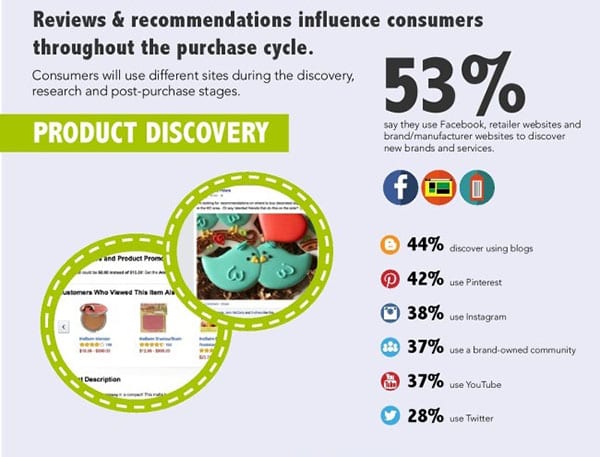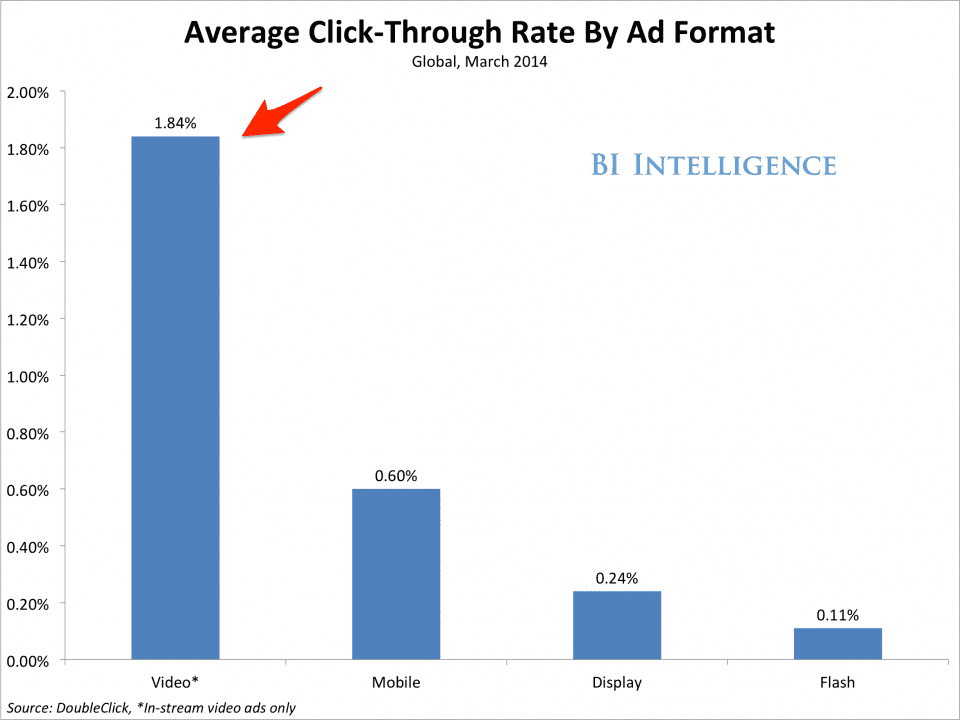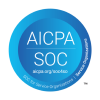6 Ways to Improve Your Ecommerce Marketing Strategy Right Now

What steps can you take to improve your ecommerce marketing strategy today? It’s a question that countless online retailers want an answer to, regardless of whether they’ve just started their online store or are established online businesses. We’ll help you get a head start with 6 ways you can add rocket fuel to your marketing plan.
Make Fact-Based Marketing Moves
Making fact-based marketing moves is the surest way to improve your ecommerce marketing strategy overall. This may sound like a given for most marketers. When questioning your position and strategy, it’s always helpful to know how you can improve conversions and increase loyalty by relying on facts.
- Start with A/B testing your landing pages, popular product pages and conversion models.
- Experiment with adding new products to the funnel to gain statistical feedback.
- Integrate funnel and conversion tracking metrics analytics software.
Software solutions like Mixpanel, a metrics analytics software that’s designed for ecommerce, help you make fact-based marketing moves on the fly. After integrating Mixpanel into the backend of your site and connecting it to your Google Analytics feed—you can begin to create conversion funnels. These funnels are stipulated by criteria that you set.
An online retailer may want to learn how many engagements a visitor had with various products while on the path to making a purchase that converted to $50 on a popular item. Learning about this experience and having the ability to compare it to thousands of other purchases over time gives the retailer a better idea of where to position niche upsell products. Having the ability to A/B test these funnels over time allows for fine-tuning and stronger conversion rates.

Mixpanel offers a white paper that delivers more information about how online retailers are using robust data and A/B testing to maximize conversions. Bear in mind that metrics analytics software is just one part of the equation (and a crucial part of it) when designing a winning marketing strategy for ecommerce.
After Marketing is Still Marketing
So many retailers are focused on the buying experience that they often overlook a critical aspect of what happens next: The after buying experience.
How long does your brand stay in the mind of a customer after they have made a purchase? What methods can you use to ensure that your customers remember you the next time they go to make a purchase? One of the best methods of marketing is after marketing. This is because it carries over brand recognition long after the purchase has already been completed.
- Create custom, branded invoices and shipping labels.
- Include handwritten thank you notes or personalize the contents of each package.
- Offer QR codes that come with a discount on the next purchase to grow your social channels
- Customize your packaging to give it that all-pro look.
Remember that from the time a customer places an order up until the time they open that order, after marketing is in full effect. Make sure you use the advantage of the “unboxing effect” as your chance to win over those new customers for life.
To help you make even more progress with this, look our related guide: 18 Ways to Add More Wow to Ecommerce.
Follow the Customer Journey
The customer journey has become a critical aspect of any solid ecommerce marketing plan. Where does the customer begin, what leads them to complete a sale, who do they tell about it along the way via social channels and word-of-mouth, and just how satisfying was the experience?
These are all critical questions that you want to have answers to, so you can optimize the ideal customer journey from start to finish (the sale).
- The customer journey is fed by want or need; the customers needs a product you sell for a specific purpose or requires it by necessity.
- More than half of these product searches in ecommerce begin at Amazon; a majority of the remainder start with a Google or a social search.
- The average ecommerce retailer is selling on two to three channels. The most common include their shopping cart, Amazon and eBay.
- Customers make a buying decision in seconds, based on numerous factors including: Price, quality, brand name, need, shipping cost, delivery time, reputation of retailer and return policy.
- Understanding these critical customer actions can help you reduce cart abandonment rates while improving brand trust and conversions.
Using integrated ecommerce CRM software like ReadyCloud can help you improve the customer journey and manage the relationship better, leading to stronger sales. What’s more, solutions like ReadyCloud give you the ability to predict the seasonality of sales, while helping you forecast (and reduce) your shipping cost while cutting down on returns and automating the sequence of them.
The customer journey is more than just a purchase. And customers should be more than just another order or invoice number. Putting a name and face to these actions helps your online store grow its customer base and improve conversions while boosting retention and long-term loyalty.
Retarget to Customers
You’re spending money on marketing and you are making your content and media strategy work in favor of you sending interested prospects to your online store. But what comes next?
If a person lands on a product page but loses interest and leaves your site (also referred to as bouncing away), what can you do to try and win over that customer again?
The simple answer: You need retargeting.
A variety of services exist that you can consider, with the most popular one being Ad Roll. Retargeting works like this. You add a special piece of code to your site that tracks visitors and the pages/products they viewed by placing a snippet of code in their browser called a cookie. If that users leaves your site without completing a sale, the code follows them and strategically places ads on the other websites they visit.
Simply put, retargeting works! It does require that you create some retargeting images that will be displayed. These can be created by you with Photoshop, if you have the knacks, or they can be outsourced via Upwork or Fiverr (lots of inexpensive options are available on both these sites).
Here’s what the most current retargeting statistics say:
- Users who are retargeted to are 70% more likely to convert.
- Display ads get a click-through rate of 0.07%; retargeted ads get a click-through of 0.7%.
- Retargeted ads have the potential to increase branded search exposure by more than 1,000%.
- 46% of online marketers believe that retargeting is grossly underused.
- 49% of major brands have now set aside specific budgets just for retargeting.
Retargeting gives your online store a whopping sales lift. According to CMO, this sales lift can be more than 1,000%. That’s too big of a number to ignore. What’s more, retargeting only requires you pay per click. This means that your ad gets seen thousands of times, but you only spend money when the user clicks through.
Even better, you can use the metrics analytics software we mentioned above (Mixpanel) as well as Google Analytics to track Cost Per Conversion (CPC) along the way.
Reducing Cart Abandonment
Shopping cart abandonment rates are high across the board. Even the most successful online retailers struggle to curb these rates. If you are wondering what the top reasons for cart abandonment are, this chart below will provide you with the answers you seek.
 Getting your customers to convert instead of abandoning the shopping cart is a good marketing strategy for ecommerce businesses that is likely already in place by your competitors. So what’s the deal?
Getting your customers to convert instead of abandoning the shopping cart is a good marketing strategy for ecommerce businesses that is likely already in place by your competitors. So what’s the deal?
These key elements need to be in place if you want to reduce abandonment:
- Creating an automated cart abandonment email.
- Retargeting to abandoners (as covered previously).
- Offering digital coupons and discounts (we’ll cover that in a minute).
- Considering integration of a free shipping threshold.
- Offering hassle-free ecommerce product returns.
- Integrating price-match pledges.
- Offering real-time and verified product reviews.
To help you combat abandonment rates here are some proven methods that you can use to reduce them in our related guide: Earn Back the Business of Cart Abandoners.
Make it More Personal
How personalized is the shopping experience at your online store? Certainly, you can only control so much of the Amazon or eBay shopping experience. But at your store… the sky is the limit!
Did you know that personalized shopping appeals to the more than 70% of shoppers who want an easy way to share a product they like via social media in just a click, add a detailed review or read one, and make use of a valuable digital coupon or promotional code that saves them some money.
To put this into better perspective: The simple addition of verified product reviews can improve your conversion rate by as much as 58%. Even better, adding something this simple to your online store can also yield these surprising increases in conversions.
Here’s how the numbers break down:
- One review added to a product page can improve conversions by 10%.
- 30 reviews added to a product page can improve conversion by 25%.
- When over 100 reviews are added, sales lift increases by 37%.
- Average order value increases to 3% from product reviews.

Keeping things personal helps your brand better connect with existing and prospective customers. Reviews and social sharing help you incrementally spread brand awareness. You can take things to the next level for personalization by adding a blog to your online store. Regular posting helps you rank for SEO and drive new traffic while aiding in your efforts to enhance social saturation and exposure.
Along the way, bear in mind that advertising is also going the way of video, with new studies finding that the most powerful cross-channel marketing tool of the present day is video, and by a large margin that yields a powerful 1.84% conversion rate, more than two times than any other ad format. With easy video creation services like RenderForest and WeVideo, and a variety of subcontract websites that offer video ad creation services starting at $5, everyone can cash in on this proven marketing method!

Put it Into Action
Combined, the elements we’ve covered in today’s post are among the most successful and potent of all ecommerce marketing strategies that you can consider. When looking to get more traffic and improve the average ecommerce conversion rate at your online store, remember that it require a multilevel approach.
Today’s shopper is a harder to win over than yesterday’s, and can easily just click over to the next store in a second. The endless online shopping options available to consumers change the rules of the ecommerce marketing game. Learning how to leverage what you have to offer versus your competitor is critical to molding a customer journey that yields strong sales.
Try putting a few of these ecommerce marketing strategies in motion for yourself. If you find that you need some help along the way, you can easily hire someone to assist you via services like Upwork, Fiverr, Freelancer, GigBucks, Guru and many others.
Staying Ahead of the Curve
As you can see, the new digital marketing world is a multichannel parallel universe. It requires a succinct approach and a unique strategy to derive success. No longer to do marketers have to be ill-equipped to pursue such a strategy.
That’s where ReadyCloud CRM comes in; it’s powerful and easy-to-use ecommerce marketing software that was made just for online retailers.
Share On:








